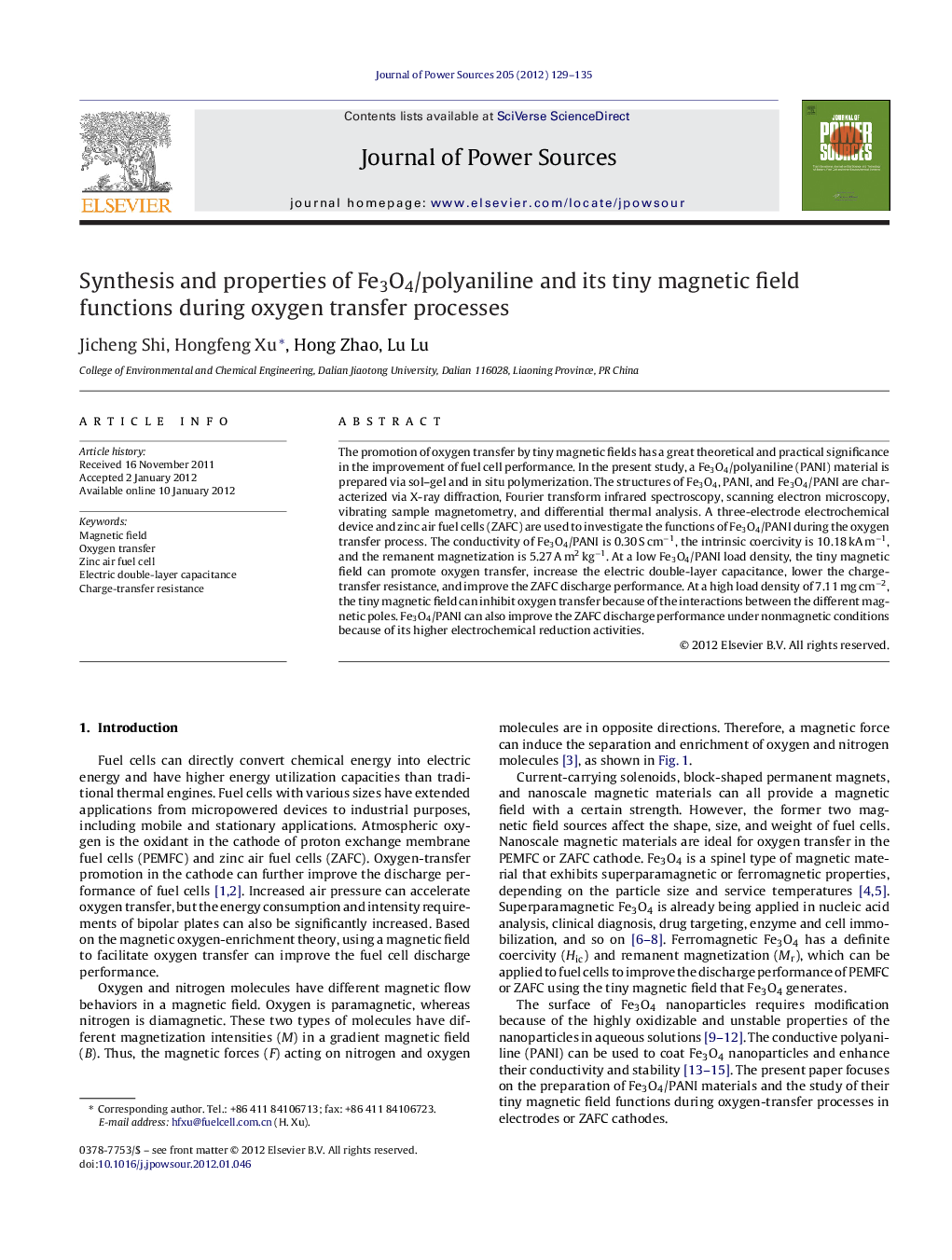| Article ID | Journal | Published Year | Pages | File Type |
|---|---|---|---|---|
| 1288123 | Journal of Power Sources | 2012 | 7 Pages |
The promotion of oxygen transfer by tiny magnetic fields has a great theoretical and practical significance in the improvement of fuel cell performance. In the present study, a Fe3O4/polyaniline (PANI) material is prepared via sol–gel and in situ polymerization. The structures of Fe3O4, PANI, and Fe3O4/PANI are characterized via X-ray diffraction, Fourier transform infrared spectroscopy, scanning electron microscopy, vibrating sample magnetometry, and differential thermal analysis. A three-electrode electrochemical device and zinc air fuel cells (ZAFC) are used to investigate the functions of Fe3O4/PANI during the oxygen transfer process. The conductivity of Fe3O4/PANI is 0.30 S cm−1, the intrinsic coercivity is 10.18 kA m−1, and the remanent magnetization is 5.27 A m2 kg−1. At a low Fe3O4/PANI load density, the tiny magnetic field can promote oxygen transfer, increase the electric double-layer capacitance, lower the charge-transfer resistance, and improve the ZAFC discharge performance. At a high load density of 7.11 mg cm−2, the tiny magnetic field can inhibit oxygen transfer because of the interactions between the different magnetic poles. Fe3O4/PANI can also improve the ZAFC discharge performance under nonmagnetic conditions because of its higher electrochemical reduction activities.
Graphical abstractFigure optionsDownload full-size imageDownload as PowerPoint slideHighlights► The performance of fuel cells can become better in tiny magnetic field. ► The efficiency of tiny magnetic field is related with Fe3O4/PANI load densities. ► Tiny magnetic field can decrease charge transfer resistance at lower load densities. ► Magnetic particles’ interactions disrupt oxygen transfer at larger load densities. ► To improve Fe3O4/PANI load density can increase electric double-layer capacitance.
